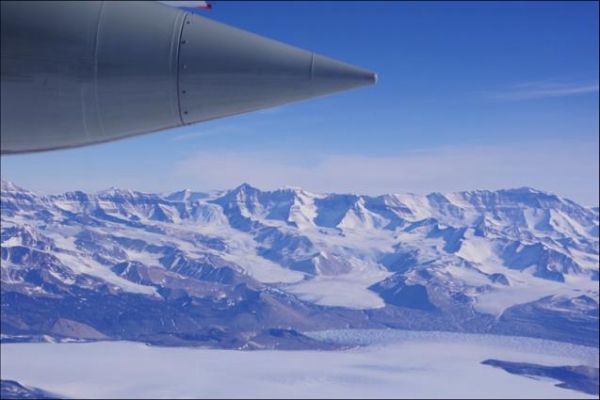The ROSETTA-Ice project, a three-year, multi-institutional data collection survey of Antarctic ice, has assembled an unprecedented view of the Ross Ice Shelf, its structure and how it has been changing over time. In a study published today in Nature Geoscience, the ROSETTA-Ice team members detail how they discovered an ancient geologic structure that restricts where ocean water flows. The discovery suggests that local ocean currents may play a critical role in the ice shelf’s future retreat.
Ice shelves are massive expanses of floating ice that slow down the flow of Antarctic ice into the ocean. ROSETTA-Ice collected data from the massive Ross Ice Shelf, which helps slow the flow of about 20 percent of Antarctica’s grounded ice into the ocean — equivalent to 38 feet of global sea level rise. Antarctica’s ice is already melting at an accelerating rate. Predicting how the ice shelf will change as the planet continues to warm requires understanding the complex ways in which the ice, ocean, atmosphere and geology interact with each other.
To gain a better understanding of these processes, the multidisciplinary ROSETTA-Ice team approached the Ross Ice Shelf much like explorers visiting a new planet for the first time. The team faced the key challenge of how to gather data from a region the size of Spain, and where ice that is frequently more than a thousand feet thick prevents more traditional ship-based surveys of the seabed. The solution was IcePod, a first-of-its kind system designed to collect high-resolution data across the polar regions. IcePod was developed at Columbia University’s Lamont-Doherty Earth Observatory and mounted on a cargo plane. Its instruments measure ice shelf height, thickness and internal structure, and the magnetic and gravity signal of the underlying rock.
Read more at Earth Institute at Columbia University
Image: Flying past the Transantarctic Mountains, which line the east side of the Ross Ice Shelf. (Credit: Susan Howard)


